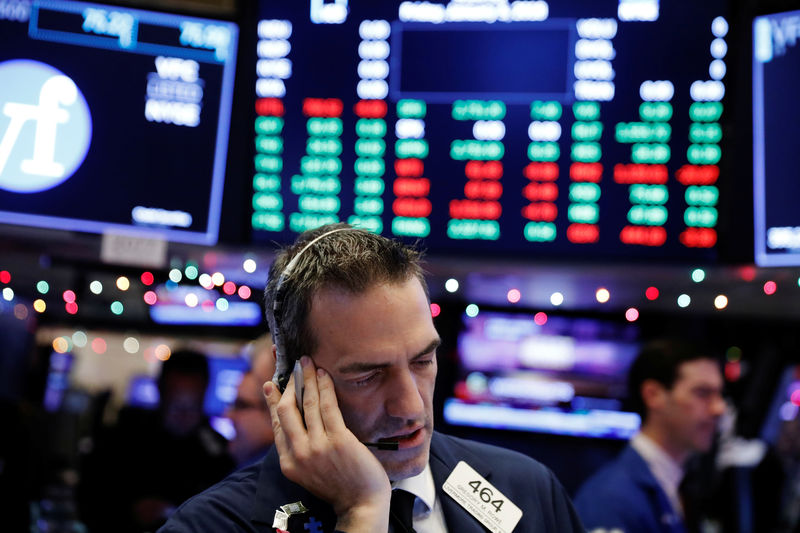This post was originally published on this site

Investing.com – The S&P 500 fell Thursday as dip-buying in the broader market ran out of steam amid ongoing fears the Federal Reserve’s plan to curb inflation could derail the economy.
The S&P 500 fell 1.5%, the Dow Jones Industrial Average slipped 1.5%, or 460 points, and the Nasdaq fell 1.6%.
Tech failed to build on intraday dip buying as fears that elevated inflation will keep the Federal Reserve on a hawkish rate hike path continued to weigh on sentiment.
Apple (NASDAQ:AAPL), Microsoft (NASDAQ:MSFT) and Alphabet (NASDAQ:GOOGL) led the decline in big tech. Semiconductor stocks were also a big drag on the sector, paced by a more than 4% fall in AMD (NASDAQ:AMD).
Producer price index for final demand increased 0.5% last month, in line with economists’ forecasts, and rose 11% for the 12 months through November, exceeding expectations for a 10.7% increase.
“Nothing in yesterday’s or today’s report suggests the Committee will deviate from the implied increase of 50bps on June 15, although some are beginning to reconsider the possibility of 75bp increase,” Stifel said in a note.
Financials also participated in the broader market selloff, under pressure from banking stocks as Treasury yields continued to lose ground on jitters about the global growth outlook.
Signature Bank (NASDAQ:SBNY), Citigroup (NYSE:C) and Synchrony Financial (NYSE:SYF) were among the biggest decliners, with the latter down more than 6%.
Wolf Research downgraded Synchrony Financial to underperform from peer perform, citing a deteriorating credit outlook.
Energy stocks fell more than 2% as investors had to contend with wild swings in oil prices as investors continue to weigh up the risk of a weaker demand backdrop against potential supply shortages.
The earnings front, meanwhile, served up mixed quarterly results.
WeWork (NYSE:WE) narrowed its losses in the first quarter as a rebound in demand for office space following the pandemic-induced slump, sent its shares more than 9% higher.
Walt Disney (NYSE:DIS), meanwhile, reported quarterly results that missed on both the top and bottom lines, but streaming was a bright spot for the company as it topped 200 million subscribers. The stock was down more than 2%.
Beyond Meat (NASDAQ:BYND) fell more than 1% after reported a wider loss than expected as rising costs dented margins.
“With increasing competitive pressures, challenges in scaling the business, and intermediate-term capital needs, we believe investors should stay on the sidelines,” Oppenheimer said in a note.
Rivian Automotive (NASDAQ:RIVN) jumped more than 16% despite reporting weaker-than-expected quarterly results.
“This quarter [for Rivian] was not without issues, but it does finally appear that Rivian is on the right track with strong demand and a supply chain that should produce 25k deliveries this year reaffirming its guidance,” Wedbush said in a note.
The latest dip in markets has many debating whether stocks are close to reaching a bottom.
Some on Wall Street have earmarked the 30-month moving average near 3,800 for the S&P 500 as the level that could attract dip buyers, but remain wary of suggesting that a bottom is close.
“[W]e still believe the U.S. equity markets are closing in on a significant low for the year, but again this process may take more time and see more damage done before that materializes,” Janney Montgomery Scott said.


